afro-solar
New Member
Heating water is one the biggest energy considerations I've had to think about. On average, 30% of a traditional energy bill can be attributed to heating water.
So I came up with a plan that guarantees I don't have to use the grid to heat water, anymore.
1. 10x 445W LONGi solar panels.
2. 1x dual-heating GeyserWorx control unit (really, is an inverter, but heats water instead of charging a battery).
3. Solar panels are wired in series below 300V (GeyserWorx MPPT input limitation).
4. Solar panels are wired in parallel to bump amperage up to 25A.
5. Each inverter in the GeyserWorx can achieve at least 12A when both are running, or 25A when one is running.
6. GeyserWorx heats traditional water tanks, fitted with a special thermostat.
7. 2x Dewhot tankless, on-demand gas heaters.
8. The gas heaters are electrically powered (to light the pilot flame).
9. The gas heaters are piped into the house's main plumbing.
10. An automated solenoid valve is used to choose between the gas heater or the traditional heater.
11. This choice is automated using a Shelly 1 wi-fi relay switch (on-demand, or time-of-day).
12. Solenoid valves that switch between the traditional tanks and gas heaters, based on the Shelly 1's instructions.
With this setup, the gas heaters are used in the early morning or on cloudy/rainy days.
The traditional tanks (which are heated by the PV-based GeyserWorx system) are used for late morning, afternoon or evening showers, on days when we've had good solar yield (which, in Johannesburg, is at least 73% of the time, per year).
The GeyserWorx system went in first, and on cloudy/rainy days, it supplemented from grid energy to heat water (it is grid-tied). But since we brought in the tankless gas heaters, we have not had to call the grid in for any water heating (going on 3 years now). As a result, I have disabled the breaker that feeds power from the grid to the GeyserWorx. All of its energy now comes purely from solar PV.
I'll share some pictures.
So I came up with a plan that guarantees I don't have to use the grid to heat water, anymore.
1. 10x 445W LONGi solar panels.
2. 1x dual-heating GeyserWorx control unit (really, is an inverter, but heats water instead of charging a battery).
3. Solar panels are wired in series below 300V (GeyserWorx MPPT input limitation).
4. Solar panels are wired in parallel to bump amperage up to 25A.
5. Each inverter in the GeyserWorx can achieve at least 12A when both are running, or 25A when one is running.
6. GeyserWorx heats traditional water tanks, fitted with a special thermostat.
7. 2x Dewhot tankless, on-demand gas heaters.
8. The gas heaters are electrically powered (to light the pilot flame).
9. The gas heaters are piped into the house's main plumbing.
10. An automated solenoid valve is used to choose between the gas heater or the traditional heater.
11. This choice is automated using a Shelly 1 wi-fi relay switch (on-demand, or time-of-day).
12. Solenoid valves that switch between the traditional tanks and gas heaters, based on the Shelly 1's instructions.
With this setup, the gas heaters are used in the early morning or on cloudy/rainy days.
The traditional tanks (which are heated by the PV-based GeyserWorx system) are used for late morning, afternoon or evening showers, on days when we've had good solar yield (which, in Johannesburg, is at least 73% of the time, per year).
The GeyserWorx system went in first, and on cloudy/rainy days, it supplemented from grid energy to heat water (it is grid-tied). But since we brought in the tankless gas heaters, we have not had to call the grid in for any water heating (going on 3 years now). As a result, I have disabled the breaker that feeds power from the grid to the GeyserWorx. All of its energy now comes purely from solar PV.
I'll share some pictures.
Attachments
-
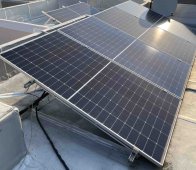 IMG_4878.jpg322.5 KB · Views: 9
IMG_4878.jpg322.5 KB · Views: 9 -
 IMG_4879.jpg191 KB · Views: 9
IMG_4879.jpg191 KB · Views: 9 -
 IMG_4881.jpg376.8 KB · Views: 9
IMG_4881.jpg376.8 KB · Views: 9 -
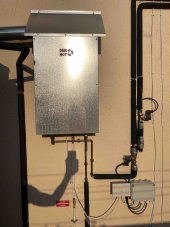 IMG_4882.jpg170.6 KB · Views: 9
IMG_4882.jpg170.6 KB · Views: 9 -
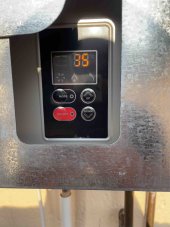 IMG_4891.jpg126.6 KB · Views: 9
IMG_4891.jpg126.6 KB · Views: 9 -
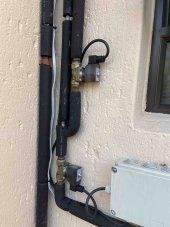 IMG_4895.jpg198.7 KB · Views: 9
IMG_4895.jpg198.7 KB · Views: 9 -
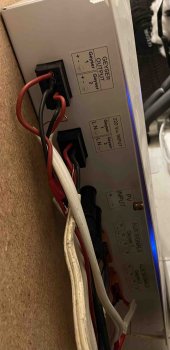 IMG_4900.jpg92.3 KB · Views: 9
IMG_4900.jpg92.3 KB · Views: 9 -
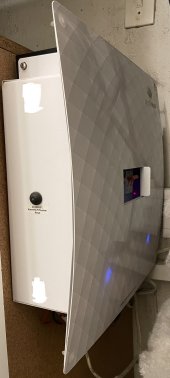 IMG_4901.jpg113 KB · Views: 8
IMG_4901.jpg113 KB · Views: 8 -
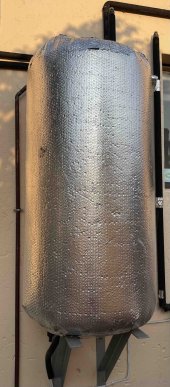 IMG_4904.jpg162.3 KB · Views: 8
IMG_4904.jpg162.3 KB · Views: 8 -
 IMG_9887.jpg204 KB · Views: 9
IMG_9887.jpg204 KB · Views: 9



